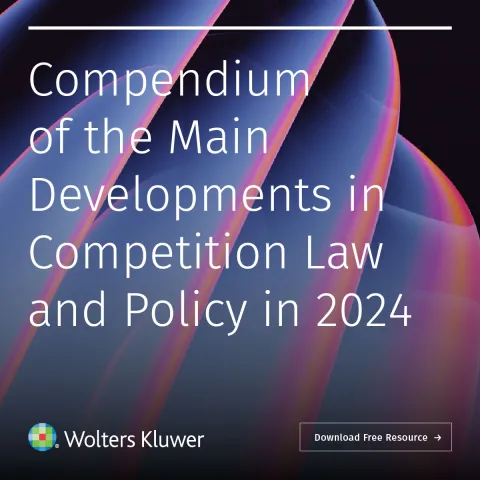Maltese Court of Appeal confirms Enemalta’s Abuse of Dominance with regards to its Aviation Fuel Infrastructure
July 28, 2025
On the 23 June 2025, the Maltese Court of Appeal upheld a 2020 Civil Court (Commercial Section) judgment finding that Enemalta Corporation engaged in anti-competitive conduct within the aviation fuel supply sector at Malta International Airport (MIA) and abused its dominant position through a margin squeeze, infringing both national and EU competition law.
Background and Case Overview
The case arose from a complaint lodged on 28 September 2006 by Attard Services Limited (‘ASL’). ASL, together with Shell, had been selected by Malta International Airport, following a tender procedure, to act as a second operator for aircraft refueling services (the first being Enemalta). In order to provide such services, ASL required access to infrastructure controlled by Enemalta, namely the facilities needed to transport and deliver aviation fuel from the port to the airport.
The complaint alleged that Enemalta imposed access fees that were so excessive that they rendered ASL's operations commercially unviable.
Following an investigation, the Office for Fair Competition (now the Office for Competition) concluded, in a report dated 11 February 2011, that Enemalta had violated Article 9(2)(d) of the Competition Act (Chapter 379 of the Laws of Malta) and Article 102(b) of the Treaty on the Functioning of the European Union (TFEU), which prohibit the abuse of a dominant position, for the period between 2004 and 2008. These findings were subsequently upheld by the Civil Court (Commercial Section) in a judgment delivered on 17 June 2020.
An appeal was then filed by Enemalta before the Court of Appeal, which delivered its judgment on the 23 June 2025, rejecting all the grounds of appeal and upholding the decision of the Civil Court.
Applicable Regime
The 2006 complaint made by ASL to the Office for Fair Competition resulted in an investigation and a report being submitted to the Commission for Fair Trading (which, at the time, had sole authority to decide on all serious breaches of competition rules) in February 2011.
Following the coming into force of the Malta Competition and Consumer Affairs Authority (“MCCAA”) Act in May 2011, and the changes it brought to the competition public enforcement landscape in Malta, the case continued to be heard by the - then newly formed -Competition and Consumer Appeals Tribunal vested with the authority of the Commission for Fair Trading and under the competition regime which applied prior to the coming into force of the MCCAA Act.
In 2019 there was a further overhaul to the competition law public enforcement regime. This, following a Constitutional Court case in May 2016 (Federation of Estate Agents v Director General (Competition) et (Constitutional application number 87/2013/2)) which found the authority of the Competition and Consumer Appeals Tribunal, and the Office for Competition, to decide on breaches of the Competition Act and issue administrative fines to be in breach of the right to a fair trial under the Maltese Constitution. As a result of these changes, the case was assigned to the Civil Court (in turn vested with the powers of the Commission for Fair Trading) to be decided under the competition regime which applied prior to the coming into force of the MCCAA Act in May 2011.
On 17 June 2020 the Civil Court delivered a judgment agreeing with the findings of the Office for Fair Competition’s 2011 report in finding that Enemalta had abused its dominant position in breach of article 9 of the Competition Act and Article 102 TFEU.
Under the applicable regime (that in place prior to the 2011 MCCAA Act) breaches were considered to be criminal in nature (with the exception - under article 26B of the Competition Act in force at the time - where the Director of the Office for Fair Competition could extinguish such criminal liability further to an agreement reached with the offender and the payment of a sum - set in conjunction with the Commission of Fair Trading). The Competition Act (prior to the 2011 MCCAA Act), noted that “a person guilty of an offence [of the substantive competition rules – in this case article 9 of the Competition Act and article [102] TFEU] shall, on conviction, be liable to a fine from one to ten per centum of the turnover of the undertaking in the economic interests of whom the person so guilty was acting”. Such person would be liable in solidum with the relevant undertaking.
In order for a fine to be imposed, proceedings had to be instituted by the police before the Court of Magistrates. This, following the finding of an offence having been committed, by the Commission for Fair Trading (for serious breaches of the Competition Act) - which did not itself have the authority to impose penalties. The Civil Court (vested with the powers of the Commission for Fair Trading in deciding this case) noted that the judgement was merely “declaratory” in terms of a decree of the 12 May 2016.
Breaches of the substantive competition rules were decriminalized with the coming into force of the MCCAA Act in 2011 which introduced a system of administrative fines. The current regime (in place since amendments to the Competition Act in 2019) affords the Civil Court the (sole) authority to decide on competition law infringements and impose fines where a breach is found. However, as noted above, the Civil Court was deciding this case under the competition regime in force prior to the 2011 MCCAA Act with the powers vested in the Commission for Fair Trading (whose role was limited to deciding on whether a breach of the Competition Act had occurred).
In this respect, it is also interesting to note that under the pre-2011 regime, which governed this case, it was not possible for an appeal on the merits from a decision of the Commission for Fair Trading.
Grounds of Appeal
Enemalta appealed the Civil Court’s judgement, presenting five objections before the Court of Appeal. Its objections challenged the finding of Enemalta holding a dominant position on the upstream market and also the basis upon which the abuse of such dominance was determined.
Dominance
Enemalta contested the finding of its dominance by suggesting that the infrastructure it controlled was not indispensable. It challenged this on the basis that potential competition was not taken into account in the Civil Court’s judgement in determining its dominance. In this context, it also challenged the finding of the Civil Court that the expense for ASL to invest in creating its own infrastructure to replicate Enemalta’s infrastructure would have been too costly for the tender duration (2004-2011). It gave the example of alternative methods for fuel delivery—such as a bridger truck system. It noted that ASL may have gone on to win the next tender beyond 2011 (as turned out to be the case) and, if not, it could have sold on any capital investments it made, which would have made such investments feasible.
The Office for Competition noted in this regard that Enemalta had brought no proof regarding the lack of barriers for ASL to create an equivalent to the infrastructure it required access to. The Office for Competition refers to Astrazeneca and Telefonica in noting that whether any alternative infrastructure was available needs to be assessed at the time the abuse occurred. It also notes, referencing Bronner that considering whether ASL was able to create a viable alternative to Enemalta’s infrastructure should be assessed on whether there were technical, legal or economic obstacles capable of making it impossible or at least unreasonably difficult for it to create such products or services (such criteria being alternate and not cumulative conditions). Either of these obstacles would suffice in demonstrating that ASL creating a viable alternative was impossible or unreasonably difficult.
Nevertheless, the Office for Competition also noted, again with reference to Bronner, that, in assessing whether there exist such economic obstacles it was necessary to establish, at the very least, that the creation of those products or services is not economically viable for production on a scale comparable to that of the undertaking which controls the existing product or service. In this context, with reference to Servier and Others v. Commission it noted that an undertaking could not be considered a potential competitor, were its entry to a relevant market not to be considered an economically viable strategy.
The Court of Appeal concluded that it could not uphold any of Enemalta’s arguments as regards ASL being able to create an alternative to Enemalta’s infrastructure. Firstly, it highlighted that there was a legal impediment to it doing so, since the law in place (reg. 14(2), Airport (Ground handling Services) Regulations, L.S. 499.25) required the use of “centralised infrastructure” (a classification which Enemalta also – unsuccessfully – argued did not apply). Secondly, the option of ASL using bridger trucks at the time was not possible due to these being tied up by contracts until 2013 and having required a significant investment due to new pipelines being required to be constructed which would have taken approximately two years.
The Court of Appeal concluded that Enemalta was not just dominant but held a monopoly on the upstream market for access to the infrastructure required by its competitors on the downstream market for aircraft refueling services.
Abuse of Dominance - Margin squeeze as a distinct form of abuse from refusal to supply
Enemalta challenged the finding of its infrastructure being indispensable which was considered by the Court of Appeal in the context of its dominance. However, this is also relevant in the context of its conduct being found to be abusive (as explained below). It also challenged the finding of a margin squeeze on the basis of the costs taken into account in the application of the equally efficient competitor test, including the lack of consideration of higher costs that were applicable to ASL.
(i) Indispensability as a pre-requisite to abuse?
Under EU jurisprudence, where an input controlled by a dominant firm is considered indispensable to its competitors, an outright refusal to access such an input may be considered an abuse of its dominant position, falling foul of Article 102 TFEU.
The Court of Appeal referenced the judgment of the Civil Court and concurred that access to Enemalta’s infrastructure was indispensable to its (downstream) competitors. It upheld the Civil Court’s ruling which noted that the charging of exorbitant prices for access to its infrastructure was tantamount to a constructive refusal to supply.
The finding of an abuse based on the excessive prices charged is consistent with the CJEU’s judgement in Teliasonera (not explicitly referenced in the judgement), where it was confirmed that even the imposition of disadvantageous conditions on competitors on the downstream market, short of there being any express refusal to supply, could be considered an abuse of dominance, in its own right, as a margin squeeze.
Where the ruling of the Civil Court, referenced in the Court of Appeal judgement, seemed to differ from the approach by the CJEU in Teliasonera, is in a reference made, obiter dictum, to it being a requirement (‘rekwizit’) for the infrastructure to be essential and/or indispensable for there to be a finding of a margin squeeze. The CJEU in Teliasonera, in this respect, has noted that “the possibility cannot be ruled out that, by reason simply of the fact that the wholesale product is not indispensable for the supply of the retail product, a pricing practice which causes margin squeeze may not be able to produce any anti-competitive effect, even potentially”.
The Court of Appeal upheld the finding that the infrastructure held by Enemalta was indispensable. However, had it not, it is not clear whether it would have considered it possible for there to be a finding of a margin squeeze.
(ii) Costs of ASL and the Equally Efficient Competitor Test
Enemalta challenged the lack of consideration given by the Civil Court to the costs ASL had to pay MIA for its User fee (which, it appears from the judgement, Enemalta was able to claim back from the government, unlike ASL) and the impact that this had on its ability to operate on the downstream market.
The Office for Competition noted that it was the costs of the dominant firm that needed to be considered in its assessment as to whether an equally efficient competitor would be able to compete with the dominant firm. It quoted Deutsche Telecom in noting that in order for a margin squeeze to be proved it is necessary to show “the difference between the retail prices charged by a dominant undertaking and the wholesale prices it charges its competitors for comparable services is negative, or insufficient to cover the product-specific costs to the dominant operator of providing its own retail services on the downstream market.”
The Court of Appeal concluded that, irrespective of the level of the MIA User fee charged to ASL, Enemalta itself, based on its own costs, would not have been able to operate on the downstream market, other than at a loss, had it to pay the fee it charged ASL for use of its infrastructure. This therefore showed that it was the user fee charged by Enemalta that precluded ASL from competing on the downstream market.
Conclusion
The Court of Appeal rejected all the arguments put forward by Enemalta and upheld the 2020 Civil Court ruling. This case is significant for a few reasons – both procedural and also substantive.
From a procedural perspective, it is interesting in that it has overlapped three very different competition law public enforcement regimes and it also highlights the challenges Maltese Courts face in applying the appropriate regime whilst ensuring due process to the defendant under the procedural authority of the Civil Court – by allowing an appeal. The conduct by Enemalta was capable of being found to be criminal at the time it took place, however, changes in the law meant that competition law breaches were reclassified into civil breaches. As mentioned, Enemalta also benefitted from an appeal on the merits, which would not have been possible under the regime in place at the time the infringement took place. The Court did not, however, proceed to impose any fine, despite having such authority under the current regime.
This case also gives us a (rare) insight into the substantive assessment by the Office for Competition and the Maltese Courts in finding an abuse of dominance under article 9 of the Competition Act and Article 102 TFEU.








